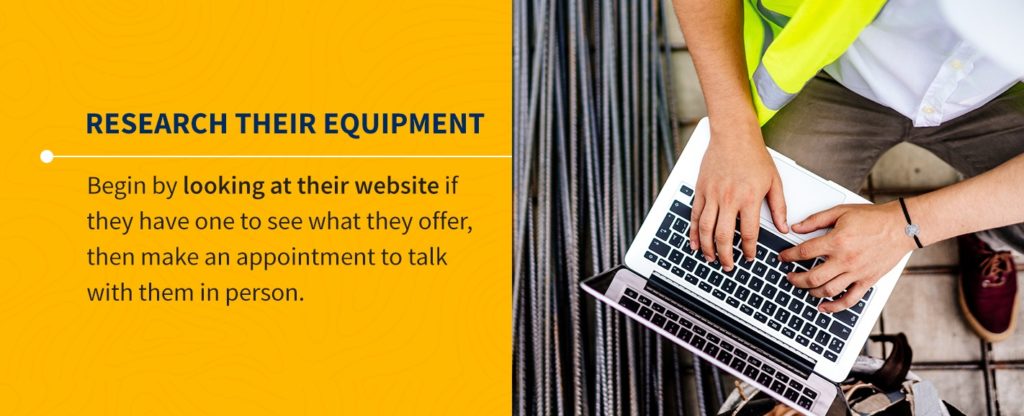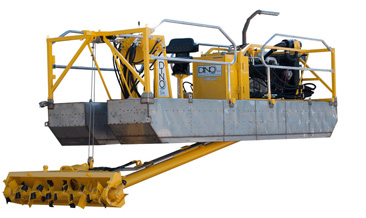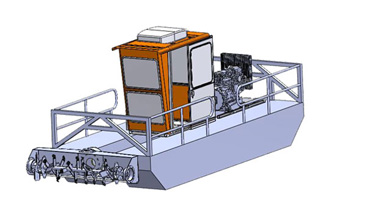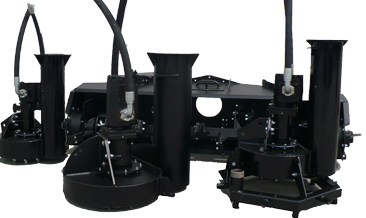Finding a dredging contractor often comes with uncertainty for companies that haven’t completed a dredging project in the past. There are plenty of factors to consider while you are weighing how to choose a dredging company. To help you through the process of selecting a dredging company, below, you can find insider information and tips that assist in helping you pick a contractor that will meet your needs.
Do Your Research
The first step to choosing a dredging contractor is to do your research on the contractors in the area. In your research, you’ll want to start by searching for excavating or dredging contractors in your area. Once you find the local contractors, you’ll want to look at any online reviews of the company. While Google’s a great place to start, you should also check the companies’ social media pages for other customers’ reviews and comments.
Remember, an occasional negative review is standard for any business and doesn’t always reflect on the kind of service a company can offer, so you should always try to look at the complete picture. To take your research to the next level, and you can even contact the company and ask if they have past client references to get a clear picture of how they operate. Often, a company will have a list of clients as references for you to get in contact with.
Research Their Equipment
After checking out their reviews and looking into their references, you should also do some research on their equipment. Begin by looking at their website if they have one to see what they offer, then make an appointment to talk with them in person. It’s a best practice to ask questions about equipment before you employ a contractor, and reputable dredging contractors will be happy to answer any questions you might have.
During your research of their equipment, you’ll want to see if the gear they have available will be able to complete the job efficiently.
For example, a marina is a tight area to dredge, so a huge excavator won’t do the job, nor will a large ocean dredge. In this case, you would want the contractor to have a smaller dredge. If you learn they have a Dino6 Dredge or other similar product that can access hard-to-reach areas, you can be confident they have the tools to get the job done.
You’ll also want to see if their equipment is environmentally friendly to make sure you are being responsible by hiring them. Along with this, you can check to see if they own or rent their equipment. Companies that rent equipment may charge higher costs as they try to cover their rental fees.
How Much Does a Dredging Contractor Cost?
Costs will vary based on the size of the project, timeline, equipment used and disposal of the material. Before you agree to a contractor, get a detailed estimate, so you know what the projected costs are. You should ask to see an itemized breakdown of everything you will be spending money on.
Typically, a few main factors go into the cost of hiring a dredging contractor. First, the company will need to establish how much material there is to dredge. Next, they’ll have to determine where they can store everything they haul out of the water and what the disposal process will need to look like. Finally, a contractor will take into account the type of material they need to dredge, factoring the degree of difficulty of removal into the cost.
Keep in mind that dredging contractors often have hundreds of thousands of dollars invested in equipment to perform their jobs, so hiring them isn’t cheap.
Ask If Their Employees Are Trained
Often, small contractors are one- or two-person operations, and the employees are skilled using dredging equipment. As you select a dredging company, you should ask if they have provided the proper training for their employees. Dredging is a technical process, and because of that, anyone operating the equipment should know how to use it safely. Due to the many contractors who have the appropriate expertise in using the equipment, you shouldn’t settle for a contractor that hasn’t taken the time to train their employees.
Sometimes, manufacturers will teach companies that purchase their equipment to use it properly. For example, GeoForm International offers training with each machine we sell. If the contractor uses a Dino6 or a Dino8, they’re likely well-trained by the manufacturer.
Be Sure They’re Insured
After confirming that they have the appropriate training, you’ll want to verify they’re insured. For one, you don’t want to be unexpectedly liable if their equipment gets damaged while they’re working on your job. Even if you aren’t worried about being held responsible, insurance can ensure the project stays on schedule, even when unexpected accidents occur.
Dredging equipment can be expensive. If it becomes damaged and it’s uninsured, it can be a massive drain on a company’s finances. For a company that is running on the margins, the damage could even send them under, leaving your project incomplete. You’ll have to start the search process all over again, and most likely spend more money on the project than you had budgeted.
Due to the necessity of having insurance, there are many heavy equipment insurance companies and plans on the market. If you want assurance that your project will get completed on time, the dredging contractor you select must have insurance for their equipment.
Need Recommendations for Your Dredging Project?
At GeoForm International, we have many dredging contractors as our clients, and we have taken it upon ourselves to provide them with training on many of our high-quality dredging and pumping systems. As you select a dredging contractor, we may be able to help if we have a customer that fits your project needs.
Contact us today to speak with one of our experts in dredging to see if we can match you with a contractor in your area who will be a great fit.




 Dino6
Dino6  Dino8
Dino8  Submersible Pumps
Submersible Pumps